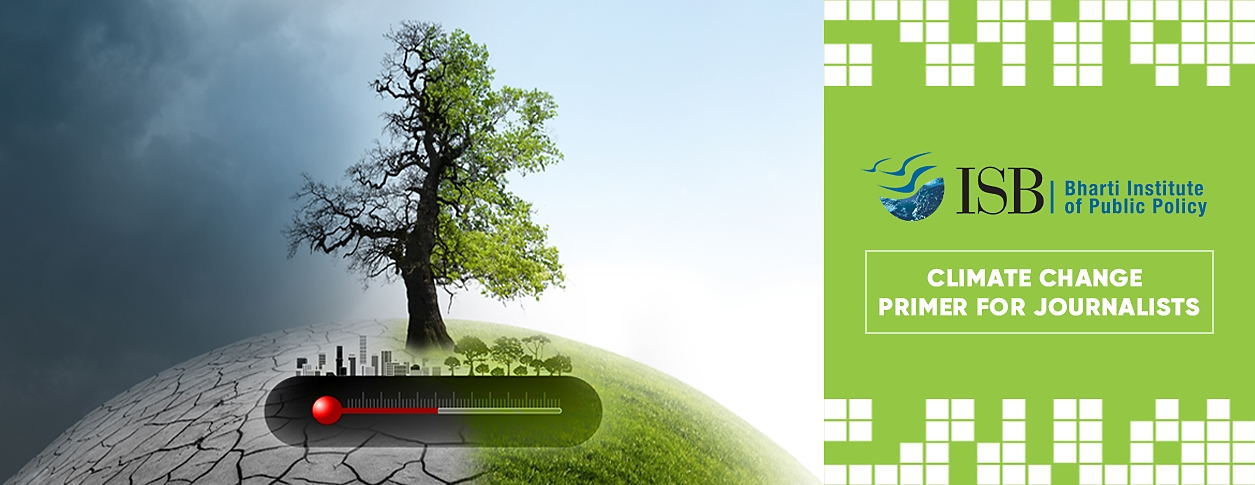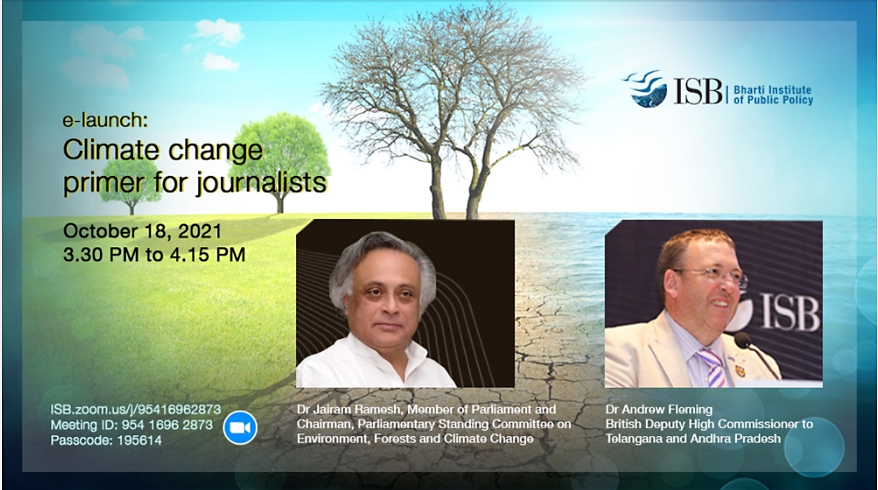Climate Change has become a household term in the past few years. Extreme weather events are witnessed more frequently than ever before and has led to growing awareness and collective action at local, regional, and national levels. Media reporting on climate change and relevant news about climate action has the potential to catalyze mass awareness and inspire further climate action. It is imperative that journalists educate themselves about the phenomenon, from scientific, socioeconomic, political and policy perspectives. This course provides a short but comprehensive introduction to different dimensions of climate change. As each media outlet prepares to report on climate negotiations, journalists taking this course will be able to navigate through the various proceedings, leading to improved reporting. Know more
Prof Ashwini Chhatre
Executive Director, Bharti Institute of Public Policy
Prof. Chhatre is an interdisciplinary scholar in Sustainability Science, Economics, and Political Science from Duke University and Harvard University respectively. He has more than 30 years of experience in cross-scale interactions between governance, economic development, and environmental protection and a long-standing engagement with scholarship in Geography, Anthropology, Landscape Ecology, Climate change, and Environmental history. Know more
Climate Change Primer for Journalists will provide an account of how the climate is continually changing our world and the new set of opportunities that can be leveraged to not just combat climate change but to also fulfill our other Sustainable Development Goals. This course is divided into five modules spanning over 5 hour of video and interactive quizzes.
MODULE DESCRIPTION
Module 1 : The Science Behind Climate Change
Climate science simply tells us about how the atmosphere functions to keep the Earth, an inhabitable planet. This understanding is fundamental to how greenhouse gases contribute to warming and cooling the Earth. Each greenhouse gas has a different global warming potential. It is potential to entrap heat over time. The GWP of CO2 is used as a benchmark to calculate how other GHGs perform. Hence the basic unit for Greenhouse gases is called Co2 equivalent. This module tells us all about how different artificial and natural gases interact in the atmosphere and how these force climatic changes. The module in concludes with a brief introduction on general Climatic models. These are computer simulated models that calibrate past and future of climatic systems to help policy makers in taking well informed climate action.
Module 2 : A Brief History of Our Climate
The module on Climate history takes us back millions and thousands of years in Earth’s lifetime. This historical overview gives insight about patterns of change in climatic systems. The different timelines on Earth are primarily decided by changes in global average temperature under the influence of natural and artificial climate forcings. The last few centuries have decidedly created a landmark change as the industrious human civilization rapidly developed technology and infrastructure. This changed climate system has impacts deleterious to us and other living organisms. This module briefly tells us how we came so far and what lies ahead.
Module 3 : Climate Negotiations
Climate negotiations are global intergovernmental decisions made towards addressing climate change. The module takes us on a journey from 1992 to 2021, telling us how countries came together to collectively agree on reducing emissions and what tools did they use to limit their contribution to global climate change. Landmark agreements on preventing acid rain and protecting the ozone layer gave us the encouragement to take on climate action. The geopolitical influence on each milestone, led to transfer of clean technology and finance for adapting to impacts of climate change on agriculture, infrastructure, communities and ecosystems.
Module 4 : Climate Change Impacts
The module on impacts of climate change shows the diversified and uncertain consequences of rising global average temperature. The shock to climate systems by humans is reverted through extreme and damaging natural events, disturbances in local weather patterns, reduced agricultural productivity and irreversible change in ecosystems. The impacts are multifold and cascading, which enhances complexity of our understanding to address them. These impacts are also not evenly affecting communities, pushing people to migrate and imposing added challenges on women. Issues of climate justice and governance requires decision makers and private sector, to incorporate this dynamic nature of climate impacts while representing collective action.
Module 5 : Opportunities and Solutions
The climate opportunities module gives a new and positive perspective to climate action at regional, national and international level. Learnings from international efforts in emission reduction, reducing deforestation and creating renewable energy infrastructure, allow us to rethink and make a paradigm shift. This shift is now being visible at the city level where local representatives and private businesses are collectively committing for adoption of good practices for climate change mitigation and adaptation.







